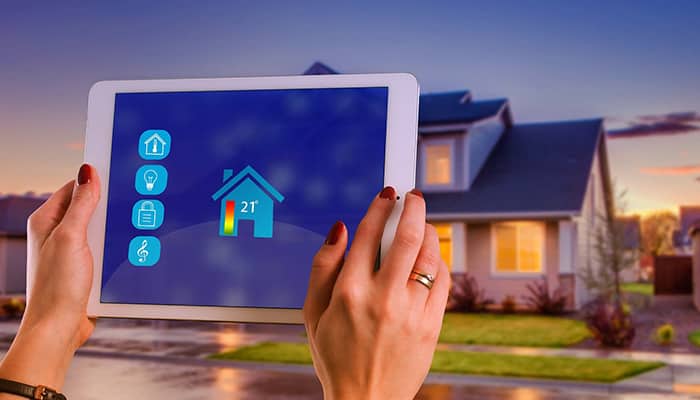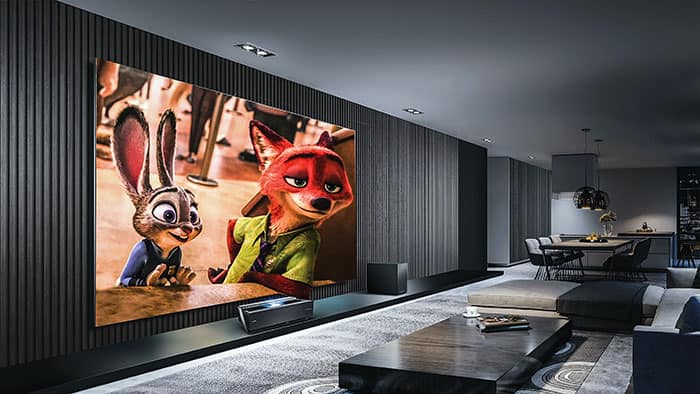Demystifying Home Automation: An In-Depth Look into Modern Living
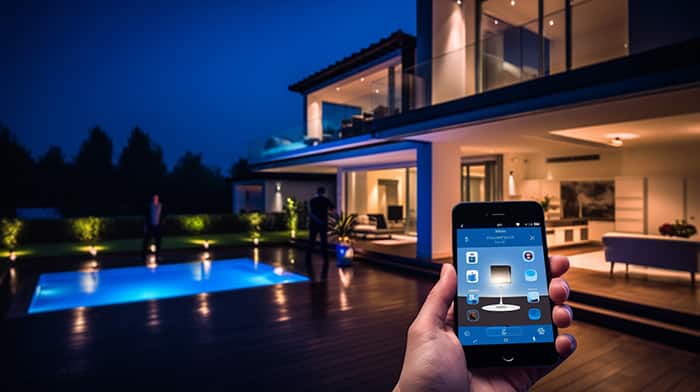
Imagine this: You’re relaxing in your cozy bed, and with just a tap on your smartphone, you’re able to dim the lights, adjust the thermostat, and even lock your front door. Sounds like a scene straight out of a sci-fi movie, right? Well, this is exactly what home automation offers. Home automation not only adds an element of convenience to our lives, but it also enhances our security, saves energy, and allows us to manage our time more efficiently. But how did we reach this point? What is the history and evolution of this technology? Let’s dig in.
The Concept of Modern Living

Modern living is characterized by the seamless integration of technology into our daily lives. It is about creating a living space that is not just physically comfortable, but also technologically advanced and efficient. It encapsulates the idea of living smarter, not harder.
In essence, modern living involves utilizing technology to make our lives more comfortable, convenient, and secure. And a significant part of this concept is home automation. By automating our homes, we can control various aspects of our living spaces with the touch of a button, even when we’re not physically present.
So, you see, the concept of modern living is not just about owning fancy gadgets. It’s about leveraging technology to improve our quality of life. And this is where home automation comes into the picture.
Technology Behind Home Automation
Home automation systems are based on the concept of IoT, where devices are connected to a network and can communicate with each other. This network is controlled by a central hub, which can be a smartphone, a tablet, or a specialized device.
In a home automation system, devices such as lights, thermostats, and security cameras are embedded with sensors and connected to the network. These sensors gather data about the environment, like temperature or light levels, and send it to the central hub. The hub then analyzes this data and sends commands to the devices to perform certain actions.
To understand the technology behind home automation, it’s crucial to understand the concept of protocols. Protocols are the language that devices use to communicate with each other. Some of the common protocols used in home automation include Wi-Fi, Zigbee, Z-Wave, and Bluetooth.
Benefits of Home Automation
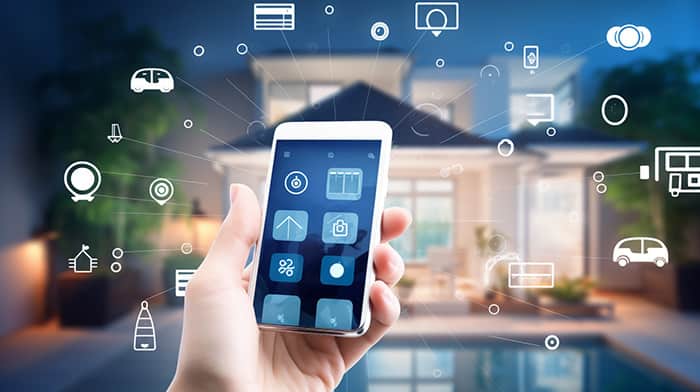
The benefits of home automation extend beyond just convenience. By automating our homes, we can increase our security, save energy, and create a comfortable living environment tailored to our needs and preferences. Home automation systems can enhance our security by allowing us to monitor our homes remotely. For instance, we can use smart cameras to keep an eye on our properties when we’re away, or use smart locks to control who can enter our homes. Here is a list of benefits:
- Easy Living: Home automation makes daily tasks simpler. You can control things like lights and thermostats effortlessly, saving time and effort.
- Save on Bills: Smart homes use less energy, which means lower utility bills. Automated systems adjust heating, cooling, and lighting based on your needs, cutting costs in the long run.
- Be Secure: Smart devices like doorbell cameras and motion sensors boost home security. You can monitor your home remotely, get instant alerts, and control access with your phone.
- Save Money: Despite the upfront cost, home automation pays off in the long term. Automated systems can lower energy bills, save water, and catch problems early to prevent expensive damage.
- Make it Yours: Customize your living space to fit your preferences. From lighting and temperature to home entertainment, automation lets you tailor your home to your liking.
- Control Anywhere: Monitor and control your home from anywhere. Whether you’re at work or on vacation, you can check security cameras, adjust settings, and get real-time alerts.
- Stay Safe: Automated systems, like smart smoke detectors, water sensors, and gas detectors, enhance safety by providing early warnings and preventing accidents.
- Accessible for Everyone: Home automation is great for people with disabilities or elderly family members. Voice control and automated features make daily living easier for those with mobility challenges.
- Everything Works Together: Smart devices work seamlessly together, creating a connected home. You can control multiple devices through one interface for a smooth and integrated living experience.
- Boost Property Value: Homes with smart technology are more appealing in the real estate market. The added convenience, energy efficiency, and security features can increase your home’s value, making home automation a smart investment.
Various Facets of Home Automation
Home automation encompasses various areas of our homes, including lighting, heating, and security. Smart lighting systems allow us to control the intensity and color of our lights, creating the perfect ambiance for any situation. We can even program our lights to turn on and off at specific times, adding an extra layer of security to our homes.
Smart heating systems, or smart thermostats, allow us to control the temperature of our homes remotely. We can program these devices to adjust the temperature based on our daily routines, ensuring our homes are always at the perfect temperature when we arrive.
Home automation also plays a crucial role in enhancing our home security. With smart locks, we can control who can enter our homes. We can also install smart cameras to monitor our properties remotely, giving us peace of mind when we’re away.
The Role of AI and Smart Devices
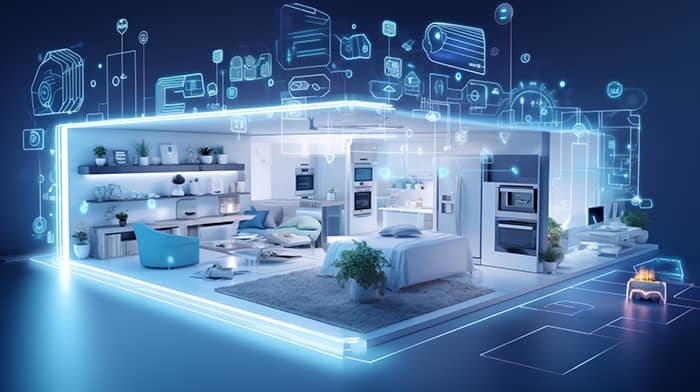
Home automation has undergone a transformative shift with the integration of Artificial Intelligence (AI) and smart devices. AI plays a pivotal role in enhancing the intelligence of home automation systems by enabling them to learn and adapt to users’ preferences and habits. Through machine learning algorithms, these systems can analyze data from various sensors and devices to make predictions about user behavior, optimizing energy consumption, and increasing overall efficiency.
For instance, AI-powered thermostats can learn the preferred temperature settings of residents and adjust heating or cooling accordingly, contributing not only to personalized comfort but also to energy conservation. Smart devices are the backbone of home automation, serving as the tangible interfaces through which users interact with the AI-driven systems. These devices, ranging from smart lighting and thermostats to security cameras and voice-activated assistants, are interconnected to create a seamless and interconnected home environment.
The convenience offered by these devices is unparalleled, allowing users to control various aspects of their homes remotely through smartphones or voice commands. Moreover, the interoperability of smart devices enhances the overall ecosystem, fostering a cohesive and integrated home automation experience. As AI continues to evolve and smart devices become more sophisticated, the role of AI in home automation is set to deepen, promising not only increased efficiency but also a more intuitive and personalized living environment.
Choosing the Right Home Automation System
Choosing the right home automation system can seem overwhelming, given the wide range of options available. However, by considering your needs, budget, and lifestyle, you can find a system that’s perfect for you.
Before choosing a system, it’s important to determine what aspects of your home you want to automate. Do you want to control your lights, temperature, security, or all of the above? Once you’ve determined your needs, you can start looking for a system that offers these features.
It’s also important to consider your budget. Home automation systems can vary greatly in price, so it’s important to find a system that fits within your budget. Additionally, consider the compatibility of the system. Make sure the system you choose is compatible with the devices you already own or plan to buy.
Embracing the Convenience
In conclusion, home automation is a revolutionary technology that has the potential to transform our lives. By automating our homes, we can enhance our security, save energy, and create a comfortable living environment tailored to our needs and preferences.
Embracing home automation is not just about adopting new technology. It’s about improving our quality of life and embracing the convenience and comfort of modern living. So, why wait? Dive into the world of home automation and experience the convenience it brings!
- Maximizing Privacy: Essential Tips for Securing Your Smart Home - February 25, 2024
- Best Home Smart Locks in 2024 - January 2, 2024
- Home Centric Vaultek Smart Station - December 17, 2023


